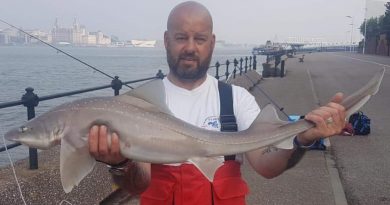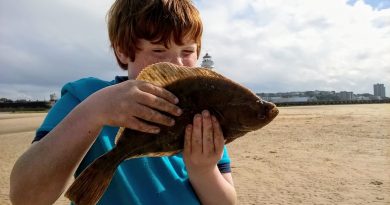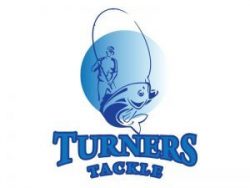Spotted Ray
The waters surrounding the United Kingdom are home to a diverse array of marine life, and one intriguing inhabitant that captures the attention of both anglers and marine enthusiasts is the Spotted Ray. Known for its distinctive appearance and fascinating behavior, the Spotted Ray, or Thornback Ray (Raja clavata), is a species that adds to the rich tapestry of the UK’s marine ecosystems.
Sizes of the Spotted Ray:
The Spotted Ray is a member of the skate family and is characterized by its flattened body, thorn-covered dorsal surface, and, of course, its namesake spots. These rays exhibit a considerable size range, with females generally growing larger than males. Adult Spotted Rays can reach lengths of up to 1.2 meters, with females often surpassing this size, making them an impressive presence in the coastal waters.
Habitat Preferences:
Spotted Rays are primarily found in the coastal waters around the UK, favoring sandy or muddy seabeds. They are frequently encountered in estuaries and shallow bays, where the sea floor provides an abundance of food sources. The rays are known to venture into depths ranging from a few meters to around 100 meters, adapting to various marine environments.
Prey and Feeding Habits:
Spotted Rays are opportunistic predators with a diet that includes a variety of bottom-dwelling invertebrates and small fish. Their mouth, located on the underside of their body, is equipped with crushing plates to help them consume hard-shelled prey like crabs and mollusks. The rays use their acute sense of smell and electroreception to locate buried prey, making them efficient hunters in their habitat.
Gender Differences:
One of the intriguing aspects of Spotted Rays is the observable gender differences. Females tend to be larger than males, and their reproductive biology is noteworthy. Female Spotted Rays have a unique way of reproducing known as oviparity. They lay distinctive rectangular egg cases, commonly referred to as “mermaid’s purses,” which attach to the seafloor and provide protection for the developing embryos. Males, on the other hand, use specialized claspers to transfer sperm during mating.
Conservation:
While the Spotted Ray is not currently listed as endangered, it faces threats from habitat degradation, overfishing, and accidental capture in fishing gear. Conservation efforts aim to ensure sustainable fishing practices, protect crucial habitats, and raise awareness about the importance of maintaining a balanced marine ecosystem.
Conclusion:
The Spotted Ray, with its striking appearance and intriguing behaviors, is a captivating species in the coastal waters of the United Kingdom. Understanding its size, habitat preferences, feeding habits, and gender differences not only enhances our appreciation for this marine marvel but also underscores the need for responsible conservation practices to ensure the continued well-being of this species and the broader marine ecosystem.




